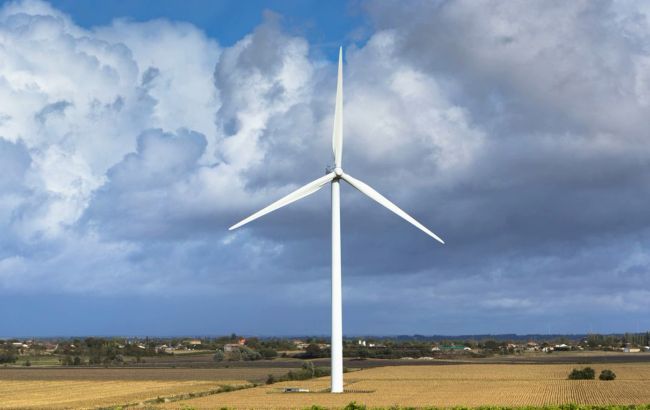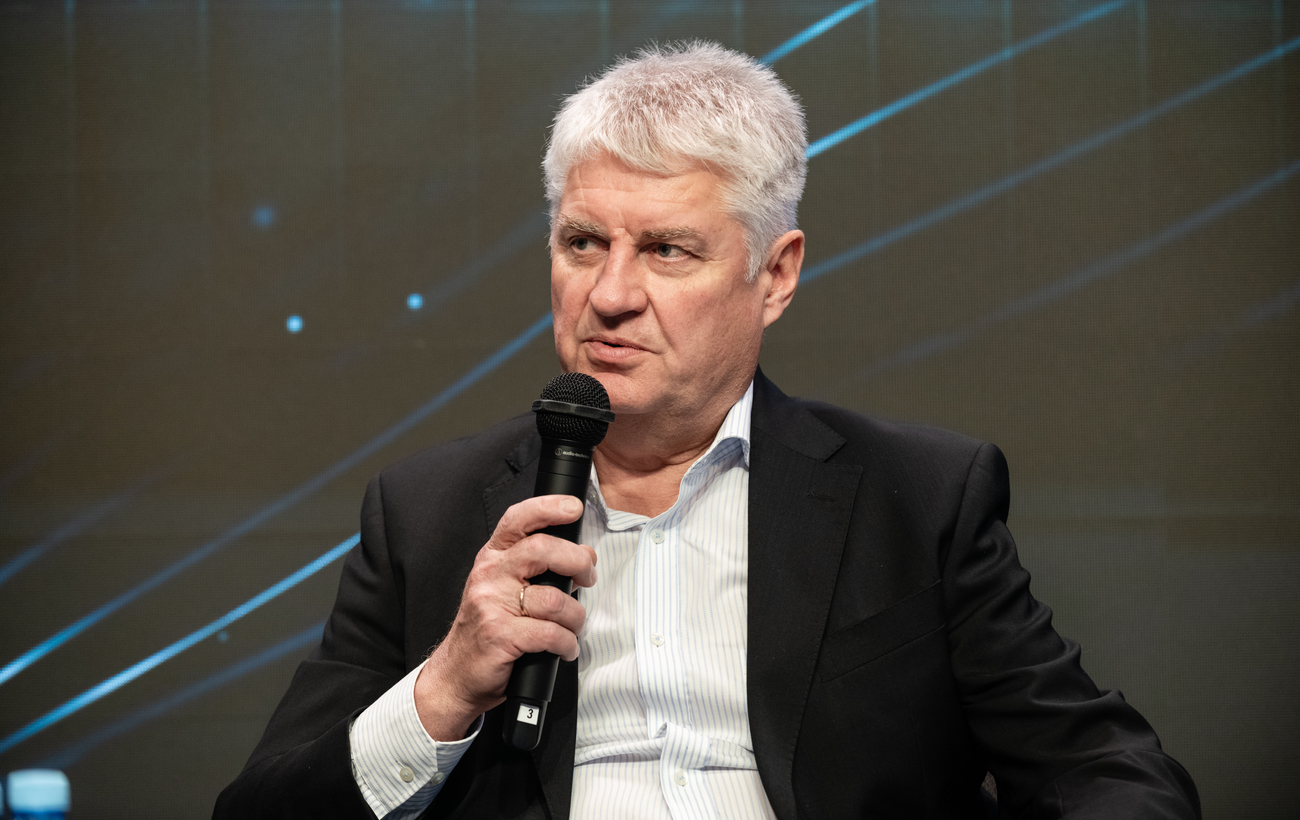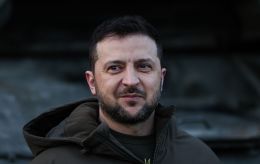Money from sun and wind: What hinders Ukraine from attracting investment in green energy
 Photo: A number of major wind energy projects are currently being implemented in Ukraine (Getty Images)
Photo: A number of major wind energy projects are currently being implemented in Ukraine (Getty Images)
The renewable energy sector is one of the few that continues to grow during wartime. It played a crucial role during mass power outages. However, its further development faces many challenges. More on the administrative, market, and international obstacles to producing green electricity and biofuels in Ukraine - read in the RBC-Ukraine report.
Dynamic growth of renewable energy
The challenges facing renewable energy were discussed by speakers and participants at the "Green Energy for Recovery" conference, held on May 22 by the independent analytical center We Build Ukraine.
The renewable energy sector experienced particularly rapid growth before the full-scale war. According to the international consulting firm Boston Consulting Group, in 2019 alone, the total installed capacity of power plants using renewable energy sources (RES) tripled — from 2 to 6 GW. During 2020–2021, the installed RES capacity increased to 8 GW.
Over more than three years of large-scale war, Ukraine has lost many such power plants — including the Kakhovka Hydropower Plant, as well as large wind and solar power stations in the south of the country. Despite this, the green energy sector remains attractive to investors and continues to show positive momentum.
“Surprisingly, even during wartime, dozens of projects with both foreign and domestic investment are being implemented in this sector. It shows solid dynamics and remains one of the few growth drivers of the national economy,” said Oleksandr Kubrakov, Chairman of the Supervisory Board of We Build Ukraine, during the conference.

Oleksandr Kubrakov, Chairman of the Supervisory Board of We Build Ukraine
Many projects are co-financed by leading financial institutions, such as the European Bank for Reconstruction and Development and the International Finance Corporation. “This means the market is attractive, and investors see its potential. It’s important not to lose this interest and to quickly implement solutions for the sector — at least at the government level,” Oleksandr Kubrakov added.
According to estimates by Boston Consulting Group, the share of renewable sources in Ukraine’s electricity production mix could double by 2040 — from the current 15% (as of 2022) to 28%, with further growth potential.
“We expect the generation mix to become significantly greener — even more so than in many European countries. Up to 60% of electricity in Ukraine could be produced from carbon-free sources,” said BCG Senior Expert Balint Silhavi.

Balint Silhavi, Senior Expert at Boston Consulting Group
According to his forecast, half of the new generation capacity will come from wind and solar power plants. The Boston Consulting Group expert believes that the growth of renewable electricity production will enable Ukraine to increase its exports to the EU to such an extent that by 2040 the country could become a net exporter of electricity.
The cheapest energy source
A key advantage of renewable energy is that it is currently the most affordable source of electricity.
To compare the cost of electricity from different sources, the levelized cost of electricity (LCOE) is used. Essentially, this is the price at which newly built power plants can sell electricity once they are operational.
According to Boston Consulting Group, the LCOE for wind and solar electricity in 2035 could be $54 and $59 per megawatt-hour, respectively. In contrast, electricity from new gas-fired plants could cost $97, nuclear — $99, and coal — $109 per megawatt-hour. This means that new fossil-fuel-based generation projects cannot currently compete with renewable energy plants.
Large wind energy projects
Wind energy, in particular, has seen significant development in Ukraine in recent years. As reported during the We Build Ukraine conference by Andrii Konechenkov, Chairman of the Board of the Ukrainian Wind Energy Association, seven wind power plants are currently under construction. These are being built by companies such as DTEK Renewables, OKKO Group, Eco-Optima, and Wind Parks of Ukraine.
“This demonstrates that, despite the war, wind energy continues to develop,” he said, adding that the portfolio of ready-to-build wind power projects currently totals 4 GW of capacity.

Andrii Konechenkov, Chairman of the Board of the Ukrainian Wind Energy Association
A vivid example is the construction of the Tyligulska Wind Power Plant in the Mykolaiv region by DTEK Renewables, which, after the launch of its second phase, will become the largest wind farm in Eastern Europe.
“We are completing the second phase of the Tyligulska wind power plant — nearly 400 MW. By the end of 2026, the total capacity of the plant will be 500 MW. We also plan to build the Poltava Wind Power Plant with a capacity of 650 MW, and we are already in the process of constructing 200 MW of energy storage systems. By 2030, we aim to have 2 GW of generation and storage capacity in our portfolio, which will help make the energy system more resilient and flexible,” said Ihor Retivov, Head of Regulatory Affairs at DTEK Renewables.

Ihor Retivov, Head of Regulatory Affairs at DTEK Renewables
OKKO Group is implementing two large wind power projects in the Volyn region. “Currently, we are building a wind power plant with a total capacity of 150 MW in Volyn. Construction is already 90% complete. Just yesterday (May 21), the first wind turbines arrived, and in two weeks we will begin the installation. We hope that by the end of this year, or by the beginning of the first quarter next year at the latest, all 25 wind turbines will be installed,” said Oleksa Konenko, Head of the Renewable Energy Department at OKKO Group. He added that the second wind farm will also be located in the Volyn region and will have a capacity of around 190 MW.
Challenges for wind and solar energy
Ihor Retivov from DTEK Renewables noted that new large-scale renewable energy projects require financing from international banks, as Ukrainian investors lack sufficient capital. On the path to attracting foreign funding, investors face issues such as regulatory stability, debt in the electricity market, and war risk insurance.
One of the biggest challenges for new RES projects is the lack of guaranteed and long-term electricity offtake agreements. “Currently, no consumers are willing to sign long-term contracts for large volumes in a volatile market. In Europe, the norm is precisely to sign long-term power purchase agreements,” commented Retivov.
To address this issue, the business community proposes launching green auctions. Although they were held in 2024, the quotas — that is, the capacity volume for which an investor can build a plant and secure a long-term electricity sales contract with the state — need to be increased. “Green auctions would give banks the assurance of repayment,” the DTEK Renewables representative noted.
Another proposed solution is the creation of a Minimum Price Guarantee Fund, which would guarantee payment of a minimum electricity price to producers in the event of a market price drop below that level. Several European governments have already expressed willingness to help finance such a fund in Ukraine, and the idea has also received support from the European Commission.
“There’s no better idea than guaranteeing a minimum price for a set period. It gives international investors confidence that if they enter this market, they will receive stable payments — at least for 5–10 years,” said Alina Sviderska, CEO of the Norwegian company Scatek Solar.
She cited examples of the company’s business in African countries, as well as in Romania and Poland, where Scatek Solar signs long-term euro-denominated electricity contracts. “In Ukraine, we’re still very far from that,” she added.
Wind energy development is also hampered by tax burdens, specifically import duties and VAT on wind power equipment. Conference participants argued that the state should exempt this equipment from taxation to improve project profitability.
“Today we paid VAT and almost immediately applied for its refund. This only increases capital expenditures and takes up companies’ time for reimbursement processing,” commented Oleksa Konenko of OKKO Group.
He believes that to speed up the implementation of large wind projects, the time required to connect to the grid operated by Ukrenergo must be reduced.

Oleksa Konenko, Head of the Renewable Energy Department at OKKO Group
According to Ihor Retivov, Ukraine must continue integrating its electricity market with the broader European market — a process known as market coupling. “This will bring us in line with European market standards,” he said.
Localizing energy equipment production
The development of renewable energy is also stimulating investment in the machinery and engineering sector, particularly the establishment of wind turbine manufacturing in Ukraine. Before the full-scale invasion, the only Ukrainian producer of multi-megawatt-class wind turbines — Friendly Wind Technology — was operating in Kramatorsk, Donetsk region. In 2023–2024, the company relocated its production to the Zakarpattia region.
According to Vladyslav Furdyk, Executive Director of Friendly Wind Technology, the company is already producing wind turbines with a unit capacity of 4.8 MW and is currently building its first wind farm in Zakarpattia, with a capacity of over 80 MW. Moreover, the company is upgrading its production lines to manufacture turbines with a unit capacity of 5.2 MW.
“Our production capacity is increasing every year — from 25 wind energy units (WEUs) annually… Our goal is to reach 100 WEUs per year, with the ability to install them both in Zakarpattia and across Ukraine,” Furdyk said, adding that the company is launching blade production for wind turbines — a first for Ukraine.
National engineering firms are also receiving orders to manufacture components for solar and wind power plants. Currently, support structures for solar panels are already being produced in Ukraine. According to Serhii Shakalov, CEO of the KNESS Group, there is also potential for localizing the production of inverters and power electronics to meet the needs of the solar energy sector.
Opportunities to increase biomethane exports
Thanks to a well-developed agro-industrial sector and extensive forestry, Ukraine has all the necessary conditions to develop bioenergy — a sector that enables the production of electricity and heat from local organic raw materials, helping to replace significant volumes of imported natural gas.
“In 2020 (the latest available statistics), bioenergy already replaced 5.2 billion cubic meters of gas. That’s about 17% of Ukraine’s total gas consumption,” commented Heorhiy Heletukha, Chairman of the Bioenergy Association of Ukraine. He added that at least another 1 billion cubic meters could have been replaced with bioenergy resources if it weren’t for current challenges.
The first major issue is subsidized natural gas prices for households and municipal utilities. For example, the current gas price for households is 8 UAH per cubic meter, for public institutions — 16 UAH, and industry — 20 UAH. Meanwhile, gas imported from Europe in February was priced at 31 UAH per cubic meter. At market prices (20–31 UAH/m³), biomass boilers offer excellent returns, but at 8 UAH/m³, they are not economically viable — eliminating incentives to switch from fossil fuels to bioenergy.

Heorhii Heletukha, Chairman of the Bioenergy Association of Ukraine
Another problem hindering the construction of biomass boiler plants, according to Heorhiy Heletukha, is the monopolistic position of city district heating network operators, who are reluctant to allow new heat producers into their systems.
At the conference, Serhii Kravchuk, CEO of the agricultural holding Gals Agro, noted that biomethane producers (who generate a natural gas substitute from organic feedstock) currently face lengthy procedures for connecting their facilities to the gas grid. This is especially problematic for small farming enterprises.
“Right now, connecting biomethane to the gas grid takes two years. The technical specifications are approved very, very slowly, and then the project must be developed. A small farmer simply can’t afford this. Naftogaz isn’t particularly interested in connecting small producers. They don’t have a program for connecting biomethane plants,” Kravchuk said.

Serhii Kravchuk, CEO of the agricultural holding Gals Agro
Conference participants emphasized the importance of rapidly scaling up biomethane production so that Ukraine can secure its niche in the European market.
“The European market has an ambitious goal: to increase the consumption of organically derived gases to 35 billion cubic meters per year by 2030. The fact that such facilities are currently under construction in Ukraine means we are on trend. This presents a real opportunity for our enterprises — to meet domestic demand and export biomethane to the EU market,” said Oleksandr Kubrakov.
According to the Bioenergy Association of Ukraine, there are currently four biomethane plants operating in the country, with a total annual production capacity of 17 million cubic meters. In 2025, additional facilities are expected to launch, increasing total production to 111 million cubic meters per year.
Development of bioethanol production
Another significant area for utilizing biomass is bioethanol production — the creation of ethyl alcohol from crop products, which is blended with gasoline to reduce reliance on fossil fuels.
“As of today, Ukraine already has 17 bioethanol plants in operation. Last year, they produced approximately 180,000 tons of bioethanol, of which 100,000 tons were exported,” said Taras Mykolaienko, Director of the Ukrainian Association of Bioethanol Producers. Currently, new bioethanol plants are under construction in Ukraine with a total capacity of up to 300,000 tons per year.

Taras Mykolaienko, Director of the Ukrainian Association of Bioethanol Producers
“The biggest challenge for the industry is the reinstatement of pre-war quotas on the supply of ethyl alcohol to Europe. These quotas are set to return on June 6,” said the head of the relevant industry association, adding that before 2022, the EU export quota for ethanol from Ukraine was 100,000 tons. Ukrainian exports have already reached that figure in 2024, so the return of the quota will pose challenges for new producers trying to sell their products.
Solutions are needed now
As emphasized by the speakers at the We Build Ukraine conference, Ukraine has already demonstrated a strong level of development in the renewable energy sector. According to Boston Consulting Group, this sector’s share in the energy mix will only continue to grow. Ukrainian renewable products — electricity from RES, biomethane, and bioethanol — are in high demand in the European market.
However, to implement new projects, the existing problems must be resolved. “Indeed, there are many issues that can be addressed now. Every segment — wind, solar, and biofuel production — has its own set of challenges,” said Oleksandr Kubrakov.
Referring to the problem of lengthy connection times for new wind power plants to the Ukrenergo grid, he noted that the market could be liberalized by allowing private contractors to participate.
“Ukrenergo currently handles everything on its own, but they could certify 10–15 private contractors they trust. All work would be done according to Ukrenergo’s standards and under its supervision. This would allow wind energy project developers to choose contractors who could complete the work much faster,” Kubrakov explained.
He emphasized that more than half of the urgent problems in this sector can be addressed even during wartime. Many of the necessary decisions fall within the government’s competence and could be made within 3–5 months to produce a positive effect.
“It’s absolutely vital that our economy starts functioning and generating tax revenues — the taxes that fund Ukraine’s defense,” Kubrakov concluded.

